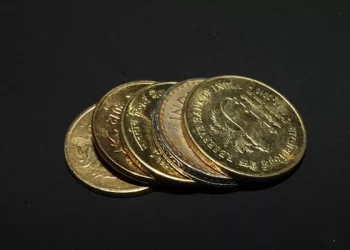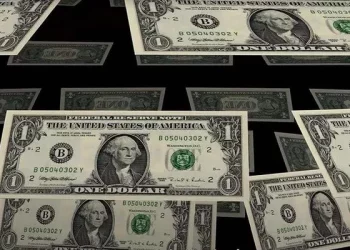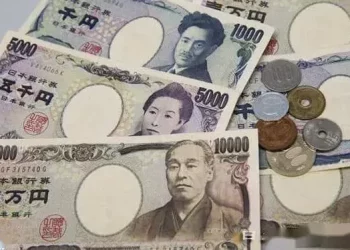The value of one currency against another is an ever-changing figure influenced by a myriad of factors. When considering the exchange rate between the Euro (EUR) and the Indian Rupee (INR), it is essential to delve into various elements that determine this rate, the processes involved in conversion, and the broader economic implications.
Current Exchange Rate
The current exchange rate between the Euro and the Indian Rupee fluctuates daily based on global market conditions. As of the latest data available in May 2024, the exchange rate is approximately 1 Euro to 90 Indian Rupees. Therefore, 650 Euros would convert to approximately 45500 Indian Rupees.
However, these rates are subject to change and can vary slightly depending on the source and the day of the transaction. It’s crucial to check a reliable and up-to-date financial source before making any conversions.
Conversion Calculation
To convert 650 Euros to Indian Rupees, you multiply the amount in Euros by the current exchange rate. Using the current rate of 1 EUR = 90 INR:
650 EUR×90 INR/EUR=45500 INR
This straightforward calculation can be performed using online currency converters, financial news websites, or through financial service providers.
Factors Influencing Exchange Rates
Several factors influence exchange rates between currencies. These include:
Interest Rates: Higher interest rates in the Eurozone attract more investors seeking higher returns, increasing demand for the Euro and appreciating its value against the Rupee.
Economic Stability: Economic indicators such as GDP growth, employment rates, and industrial production influence investor confidence. A stable economy attracts investment, boosting the currency’s value.
Inflation Rates: Lower inflation in the Eurozone compared to India means the Euro maintains its purchasing power better than the Rupee, leading to a stronger Euro.
Political Stability: Political events, policy changes, and stability play a significant role. Political instability in India, for instance, can depreciate the Rupee against the Euro.
See Also:1 Pound in Indian Rupee
Market Speculation: Traders’ perceptions and speculative activities can cause short-term fluctuations in the exchange rate.
Trade Balances: A trade surplus (more exports than imports) in the Eurozone can lead to a stronger Euro as foreign buyers exchange their currencies for Euros.
Foreign Exchange Reserves: Countries with higher reserves can better manage their currency’s value in the global market, impacting exchange rates.
Forecast and Trends
Predicting future exchange rates is complex and involves analyzing various economic indicators, geopolitical events, and market sentiments. Economists and financial analysts use historical data, current trends, and predictive models to forecast exchange rates.
Currently, trends suggest that the Euro may continue to strengthen against the Rupee due to the relative economic stability and recovery in the Eurozone post-pandemic compared to the Indian economy. However, potential interest rate changes by the European Central Bank (ECB) and the Reserve Bank of India (RBI) could alter this dynamic. Additionally, any significant geopolitical events or economic reforms in either region could impact these trends.
Financial Advice
When dealing with currency exchange, it is crucial to consider timing and the method of conversion to maximize value. Here are some tips:
Monitor Exchange Rates: Keep an eye on the daily fluctuations and choose a time when the rates are most favorable.
Use Reliable Financial Services: Banks, forex brokers, and online platforms offer different rates. Compare these to get the best deal.
Hedging: For businesses, using financial instruments like futures contracts can hedge against unfavorable currency movements.
Diversification: Diversify your investments to mitigate risks associated with currency fluctuations.
Stay Informed: Regularly update yourself with economic news and forecasts to make informed decisions.
Legal and Tax Implications
Converting currencies and international money transfers come with legal and tax considerations:
Tax on Currency Gains: In India, profits from foreign exchange transactions might be taxable under capital gains tax.
Compliance: Ensure compliance with foreign exchange management regulations, such as those outlined by the Foreign Exchange Management Act (FEMA) in India.
See Also:500 Rupees in US Dollars
Reporting Requirements: Large transactions may need to be reported to tax authorities to avoid penalties.
Transaction Documentation: Maintain thorough records of all transactions for legal and tax purposes.
Economic Indicators
Several economic indicators can impact the exchange rate between the Euro and the Indian Rupee:
Gross Domestic Product (GDP): Higher GDP growth rates in the Eurozone can strengthen the Euro against the Rupee.
Inflation Rates: Comparative inflation rates affect purchasing power parity and, consequently, the exchange rate.
Employment Rates: Higher employment rates signal economic stability and growth, impacting currency value.
Trade Balance: A favorable trade balance boosts the currency’s strength.
Interest Rates: The differential between ECB and RBI interest rates significantly impacts currency values.
Global Market Impact
Exchange rates are influenced by and also influence global markets. For instance:
Import and Export: Fluctuations in the exchange rate can make exports cheaper or more expensive, affecting trade balances.
Investment Flows: Stronger currencies attract foreign investment, impacting stock markets and economic growth.
Tourism: Exchange rates affect tourism as favorable rates attract more tourists, boosting the local economy.
Commodities: Prices of commodities traded internationally, like oil and gold, can be influenced by currency strength, impacting global markets.
Conclusion
Understanding how much 650 Euros is in Indian Rupees involves more than just a simple conversion calculation. It requires an appreciation of the dynamic factors influencing exchange rates, from economic indicators and market speculation to geopolitical events and fiscal policies. Staying informed about these elements can help individuals and businesses make better financial decisions, hedge against risks, and optimize their currency exchanges. By considering the forecasted trends, legal implications, and broader economic impact, one can navigate the complex world of currency exchange with greater confidence and foresight.
Related Topics:


























